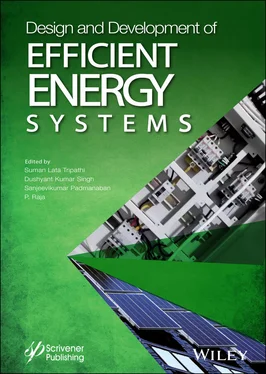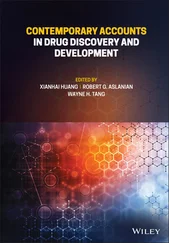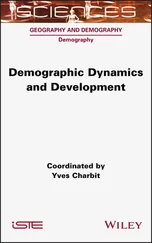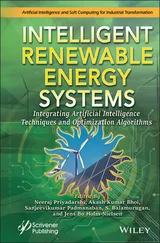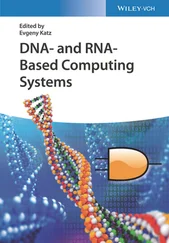© 2021 Scrivener Publishing LLC
For more information about Scrivener publications please visit www.scrivenerpublishing.com.
All rights reserved. No part of this publication may be reproduced, stored in a retrieval system, or transmitted, in any form or by any means, electronic, mechanical, photocopying, recording, or otherwise, except as permitted by law. Advice on how to obtain permission to reuse material from this title is available at http://www.wiley.com/go/permissions.
Wiley Global Headquarters
111 River Street, Hoboken, NJ 07030, USA
For details of our global editorial offices, customer services, and more information about Wiley prod-ucts visit us at www.wiley.com.
Limit of Liability/Disclaimer of Warranty
While the publisher and authors have used their best efforts in preparing this work, they make no representations or warranties with respect to the accuracy or completeness of the contents of this work and specifically disclaim all warranties, including without limitation any implied warranties of merchantability or fitness for a particular purpose. No warranty may be created or extended by sales representatives, written sales materials, or promotional statements for this work. The fact that an organization, website, or product is referred to in this work as a citation and/or potential source of further information does not mean that the publisher and authors endorse the information or services the organization, website, or product may provide or recommendations it may make. This work is sold with the understanding that the publisher is not engaged in rendering professional services. The advice and strategies contained herein may not be suitable for your situation. You should consult with a specialist where appropriate. Neither the publisher nor authors shall be liable for any loss of profit or any other commercial damages, including but not limited to special, incidental, consequential, or other damages. Further, readers should be aware that websites listed in this work may have changed or disappeared between when this work was written and when it is read.
Library of Congress Cataloging-in-Publication Data
ISBN 9781119761631
Cover images: Electrical Systems - Suman Kumar Singh | Dreamstime.comSolar Panels - Adisak Rungjaruchai | Dreamstime.com
Cover design by Kris Hackerott
Set in size of 11pt and Minion Pro by Manila Typesetting Company, Makati, Philippines
Printed in the USA
10 9 8 7 6 5 4 3 2 1
The objective of this edition is to provide a broad view of the fundamental concepts of green energy technology and applications in a concise way for fast and easy understanding. This book provides information regarding almost all the aspects to make it highly benefi-cial for all students, researchers and teachers of this field. Fundamental principles of green energy technology with the latest developments are discussed in a clear and detailed manner with explanatory diagrams wherever necessary. The book focuses on the basic concepts of Internet of Things (IoT) in power conversion, IoT in renewable energy, and adoption of machine learning, low-power device and circuit design including the latest research available depending upon the technological changes based upon their application.
Chapter Organization
Chapter 1deals with prefabrication low-power device design and analysis on Visual TCAD device simulator with graphical and programming interfaces. Also, the chapter discusses the design of device-based low-power memory and biomedical applications.
Chapter 2mainly describes Vedic multiplication based on the compressor block that is focused on the reduction of interconnect wire. The multiplier is implemented using Verilog HDL with cadence NC SIM and the constrain areas, power and delay optimize using underlying block.
Chapter 3deals with gas leakage detection from drainage to offer safety for sanitary workers from gases such as Carbon monoxide (CO), Hydrogen sulphide (H2S), and Methane (CH4), which are some of the hazardous gases present in underground drainage systems.
Chapter 4presents a smart healthcare system development with machine learning, which is energy efficient, with reduced network latency and minimum bandwidth.
Chapter 5This chapter presents some of the solutions in literature for implementing security. The chapter also covers different types of attacks such as goal-oriented attack, performer-oriented attack and layer-oriented attack.
Chapter 6addresses the energy-saving component and the application of digital technology and Internet of Things (IoT) in large-scale process industries.
Chapter 7discuss the method deployed relay node in such a way that the network will behave like a sensor network with the help of K-Means clustering approach.
Chapter 8analyzes an MLI fed Induction Motor Drive by considering Solar Energy as a source. The effects of employing various types of MLI for a PV source-based drive, and methods of deriving maximum drive efficiency are elaborated in this chapter with sufficient simulation results.
Chapter 9describes energy storage systems using a universal controller that can work for a wide range of voltage to both DC and AC loads with high power rating and low power loss.
Chapter 10explores energy arrangement producers, energy financial analysts, and directors with a review of the job of IoT in enhancement of energy frameworks.
Chapter 11focuses on integration of photovoltaic cell, wind energy and other forms of renewable energy. It also covers microgrid systems with high reliability, less transmission losses and improved power system efficiency.
Chapter 12describes state-of-the-art renewable energy systems and highlights the global efforts being made to increase their efficiency.
Chapter 13is dedicated to Internet of Things (IoT) technologies with best solutions, ease of the task of monitoring and analysis that opens up a wide range of prospects for making better future decisions.
Chapter 14examines new security challenges in the Internet of Things (IoT) using machine learning algorithm and the system of interrelated computing devices for its quick development and distribution that are essential for internet and smart device users.
Chapter 15presents a working and solution process, an illustrative fuzzily defined mathematical framework for optimizing food quality. Here, the emphasis is not only on ensuring fruit safety but also avoiding foodborne diseases.
Chapter 16is an overview of the various requirements for Internet of Things (IoT) systems and architectures, highlighting different research challenges and security issues connected with IoT.
Chapter 17presents a state-of-the-art of FinFET technology with low power consumption and their application in a low-power VLSI circuit.
Chapter 18proposes a single-source high step-up switched-capacitor-based 19-level inverter topology with enhanced power quality that can be extended by addition of switched-capacitor units. The extended topology can produce larger gain and voltage steps.
1
Design of Low Power Junction-Less Double-Gate MOSFET
Namrata Mendiratta and Suman Lata Tripathi*
VLSI Design Laboratory, Lovely Professional University, Phagwara, Punjab, India
Abstract
The requirement of low power consumption and higher IC packing density leads the designer to explore new MOSFET architectures with low leakage current and operating voltages. Multi-gate MOSFET architectures are a promising candidate with increased gate-control over the channel region. Double-gate MOSFET is one of the advanced MOSFETs with a thin-channel region sandwiched into the top and bottom gate. The changes in the position of the top and bottom gate overlap and also have a significant effect on the electrical characteristics of transistors. The higher number of gates increases the drive current capability of the transistor with enhanced gate control that is desired for low-power and high-speed operations of digital circuit and bulk memories. The junction-less feature future improves switching characteristics of multi-gate MOSFETs with more drive current and high I ON/I OFFcurrent ratio. These prefabrication low-power design and analysis can be done on a Visual TCAD device simulator with graphical and programming interfaces that reduce fabrication cost and improve overall throughput.
Читать дальше
